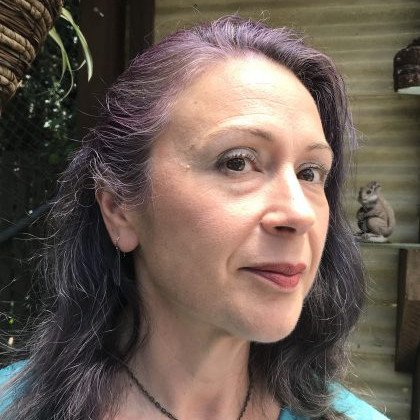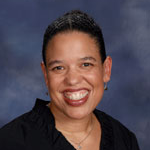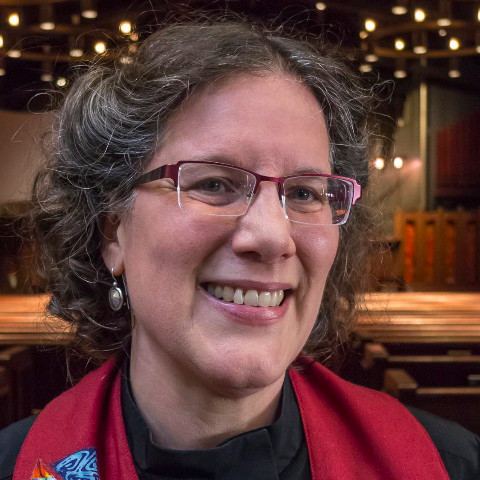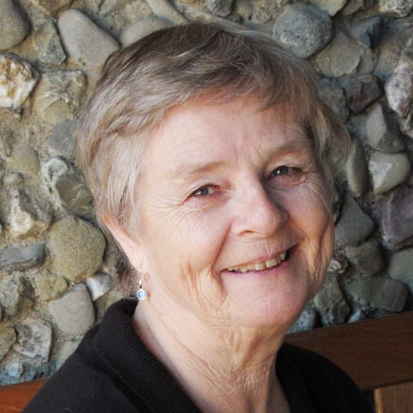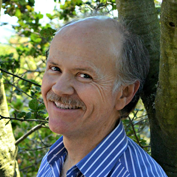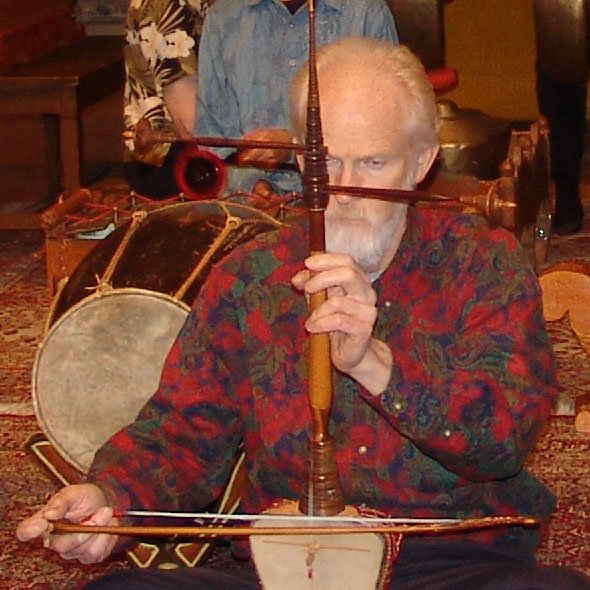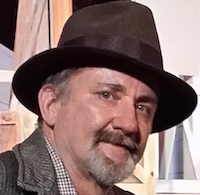Barbara stands in the kitchen, in front of the window, in the morning light.
She holds a small glass plate so the light streams through it. “Look how beautiful this is,” she says, “See how the sun highlights the deep blue and makes it sparkle.”
I see neither blue nor sparkle. I see her hand holding up a small square object. From the angle where I stand no direct rays of the sun shine through. From a different perspective I cannot see the beauty.
Slavery is the topic of two films nominated for Best Picture of 2012. Lincoln tells how the President moves to see abolition as a moral requirement, and a strategic necessity. Django Unchained demonstrates the physical and spiritual violence of slavery through the revenge of a freed slave.
Two perspectives, two lenses: each showing the light of truth from a different angle.
Two men love one another and long to marry. A Southern Baptist Oklahoma preacher sees sin, and illegality. The Bay Area daughter of two mothers sees beauty, and legitimacy. Two perspectives: is there room for mutual understanding? Where is the light of truth?
Over the last several years I’ve been particularly interested in understanding the impact on our lives of differences in perspective. Whether it’s the angle of the light, the shadows of our consciousness, the height from which we observe, or what we expect to see, there are many variables that go into producing what we experience as truth.
We know those optical illusions where what you see depends on whether you focus on black or white. Is it a man playing a saxophone or a woman’s face?
Is it a young woman or an old woman?
Is it a duck or a rabbit?
What you see depends on how you look, and where you look. What you see depends on what you look for.
Was God wearing a red hat, or a blue hat? Was it neither, or both? How do you know and what difference does it make?
How much of what I see is because of how I was trained to see? What did my parents, my teachers, my church, teach me to see? This complex of influences grows as we factor in our geographical location.
I was raised in Oklahoma. I was raised in the United States. I’m a “Boomer,” born in the post World War II era to parents who were teenagers in the Great Depression. How is my perspective a product of these influences?
What complex of influences has shaped your perspective?
We call these patterns of influence “culture,” referring to the shared beliefs, attitudes, and values that shape our life practices. To a great extent we are products of our culture, and we know all too well what happens when cultures collide.
Whether in our families, political parties, or nation states, we human beings, ground-based through all the years of our evolution have been territorial creatures, marking the lines of us and them.
We fight wars over territory. We build huge steel walls to prevent migration. They are expressions of our “culture wars.”
It was only forty years ago that any of us saw for the first time a picture taken from space showing the full Earth, void of any national boundaries and state lines.
Forty years is not long in the evolution of human consciousness. It’s only in recent decades we have used metaphors like “the interdependent web of all existence” to describe not only our ecological unity but also our evolving understanding of human culture.
I believe Unitarian Universalists have an important role to play in the evolution of the inter-cultural consciousness needed to create a non-violent, compassionate, justice-oriented future for our global community. We ground our faith in the affirmation of the search for truth and meaning with the goal of world community with peace, liberty, and justice for all.
We affirm truth from all sources. We teach our children the importance of asking questions. At our best we are a culture of inquiry, open to growing.
These qualities lend themselves nicely to the cultivation of intercultural competence, but, just like any other field of knowledge it requires learning and practice.
If we are to grow in knowledge, skills, and abilities to interact across cultures we need to develop openness to the unfamiliar, comfort in the adventure of learning something new. That’s not always easy. We are comfortable with what is familiar. We need one another to remind us that what is familiar must grow and change to be a valued part of tomorrow’s culture.
Think of the culture of communication and information technology. I can’t keep up with it. By the time I’m a little comfortable in using my new phone, it’s three generations behind.
But I do believe, to successfully transform into a global community we need to know and name what we find meaningful, and be curious to learn what is meaningful to folks in cultures new to us. They may be cultures defined by geography, age, language, religion, identity, music, technology, or other factors.
We need to value differences, and not assume we hold things in common. We need to encourage one another to ask questions, to discover if we do hold things in common, and, if so, to build on them.
Do we affirm similar values, or can we negotiate shared values?
Unitarian Universalists practice covenant-making. We know how to express our values, how to listen to and appreciate others. We know how to agree on norms and how to make promises. We can apply this practice of covenant-making in ever-larger circles.
For two hundred years Unitarian Universalists have affirmed that what holds us together is not a creedal list of religious beliefs, but the practice of encouraging one another on the journey of authenticity.
We affirm the gifts of our differences: the knowledge that comes from scientific pursuit, the insight that comes from spiritual practice.
We can offer this gift to a world in need of practices that create community not out of sameness but from shared pursuit.
I sat with a group of people from this congregation. We looked around the circle and wondered, “Who is not here? Whose voice are we not hearing?” When it comes to intercultural work, we can notice, and reach out. We can stretch our comfort zones and invite conversation.
We can stretch our comfort zone with a willingness to experience vulnerability, to speak the truth we know with care, and let our true selves be seen.
What happens to you when you experience someone being authentic, sharing from a deep place of compassion and concern?
If you are like me you begin feeling compassionate and inspired to stretch and risk being authentic.
We do this for one another. Here in this religious community we do this in our small group ministry circles, sitting around the chalice, the flame of truth, of community, listening one another into deeper presence.
We can stretch our comfort zones further.
Four years ago this month, Barbara and I headed to India intent on stretching, on encountering the many and diverse expressions of religious life that enrich the subcontinent. We visited Maher, an organization created by a Catholic nun to house abused women and their children.
It is an amazing place of comfort and excitement. Women discover and develop skills they didn’t know they had. Children are raised in loving community.
Sister Lucy’s catholicism is spelled with a lower case “c,” meaning wide-reaching, all-embracing. Their banner displays religious symbols from around the world.
Imagine being a child raised by loving elders where the best of all the world’s religions is your everyday curriculum. Maher invites us to see from many perspectives, to have our vision informed by the wisdom of the world. Maher invites us to practice seeing from others’ perspectives, and from the encounter to create a more beautiful world.
Together, across ages, from the youngest to the oldest among us, we are invited to participate in a community art project. We will create another mosaic, The River of Life.
Mosaics bring together different perspectives, materials from our lives, broken bits of ceramic and tile and objects. Each of us, from our perspective, with the direction of our mosaic artist, Kim Larson, can make part of the mosaic and out of this diversity create a community expression of beauty. Next week, after the 11:00 service, in the first of three workshops you will have an opportunity to make a portion of the mosaic.
Bring some pieces of ceramic or tile with you.
It will be a chance to stretch, to engage, to practice the art of community.
* * * * * * *
Rise up. Rise up above the steel fence.
Rise up above all that separates and divides.
The Divine walks right down the middle.
Rise up to the view that extinguishes false boundaries.
See the vista on all sides:
“All the colors, yes the Black and the White and the Red
and the Brown and the Yellow.”
Is it a young woman, or an old woman? Yes.
Is it a rabbit, or a duck? Yes.
When the cultural mix you are meets the cultural mix of another, may a new vision of what is possible emerge, and may you give yourself to the creation of a beautiful tomorrow.
Rise up, and rise up further, until you can see that
“other lands have sunlight too, and clover,
and skies are everywhere as blue as mine.”
Rise up until you can hear
“Other hearts in other lands are beating
with hopes and dreams as true and high as mine.”


